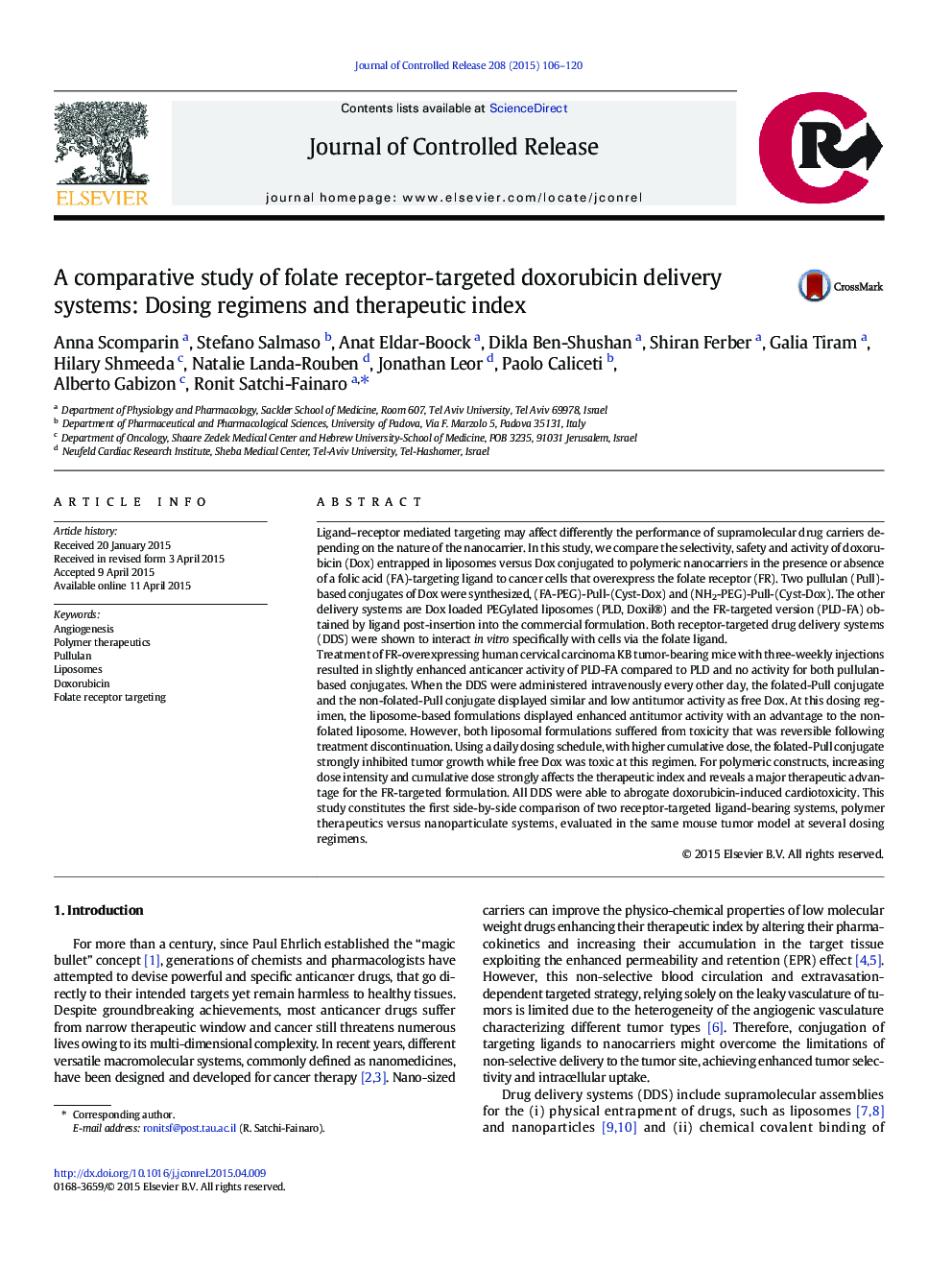| کد مقاله | کد نشریه | سال انتشار | مقاله انگلیسی | نسخه تمام متن |
|---|---|---|---|---|
| 1423744 | 1509041 | 2015 | 15 صفحه PDF | دانلود رایگان |
Ligand–receptor mediated targeting may affect differently the performance of supramolecular drug carriers depending on the nature of the nanocarrier. In this study, we compare the selectivity, safety and activity of doxorubicin (Dox) entrapped in liposomes versus Dox conjugated to polymeric nanocarriers in the presence or absence of a folic acid (FA)-targeting ligand to cancer cells that overexpress the folate receptor (FR). Two pullulan (Pull)-based conjugates of Dox were synthesized, (FA-PEG)-Pull-(Cyst-Dox) and (NH2-PEG)-Pull-(Cyst-Dox). The other delivery systems are Dox loaded PEGylated liposomes (PLD, Doxil®) and the FR-targeted version (PLD-FA) obtained by ligand post-insertion into the commercial formulation. Both receptor-targeted drug delivery systems (DDS) were shown to interact in vitro specifically with cells via the folate ligand.Treatment of FR-overexpressing human cervical carcinoma KB tumor-bearing mice with three-weekly injections resulted in slightly enhanced anticancer activity of PLD-FA compared to PLD and no activity for both pullulan-based conjugates. When the DDS were administered intravenously every other day, the folated-Pull conjugate and the non-folated-Pull conjugate displayed similar and low antitumor activity as free Dox. At this dosing regimen, the liposome-based formulations displayed enhanced antitumor activity with an advantage to the non-folated liposome. However, both liposomal formulations suffered from toxicity that was reversible following treatment discontinuation. Using a daily dosing schedule, with higher cumulative dose, the folated-Pull conjugate strongly inhibited tumor growth while free Dox was toxic at this regimen. For polymeric constructs, increasing dose intensity and cumulative dose strongly affects the therapeutic index and reveals a major therapeutic advantage for the FR-targeted formulation. All DDS were able to abrogate doxorubicin-induced cardiotoxicity. This study constitutes the first side-by-side comparison of two receptor-targeted ligand-bearing systems, polymer therapeutics versus nanoparticulate systems, evaluated in the same mouse tumor model at several dosing regimens.
Figure optionsDownload high-quality image (214 K)Download as PowerPoint slide
Journal: Journal of Controlled Release - Volume 208, 28 June 2015, Pages 106–120
